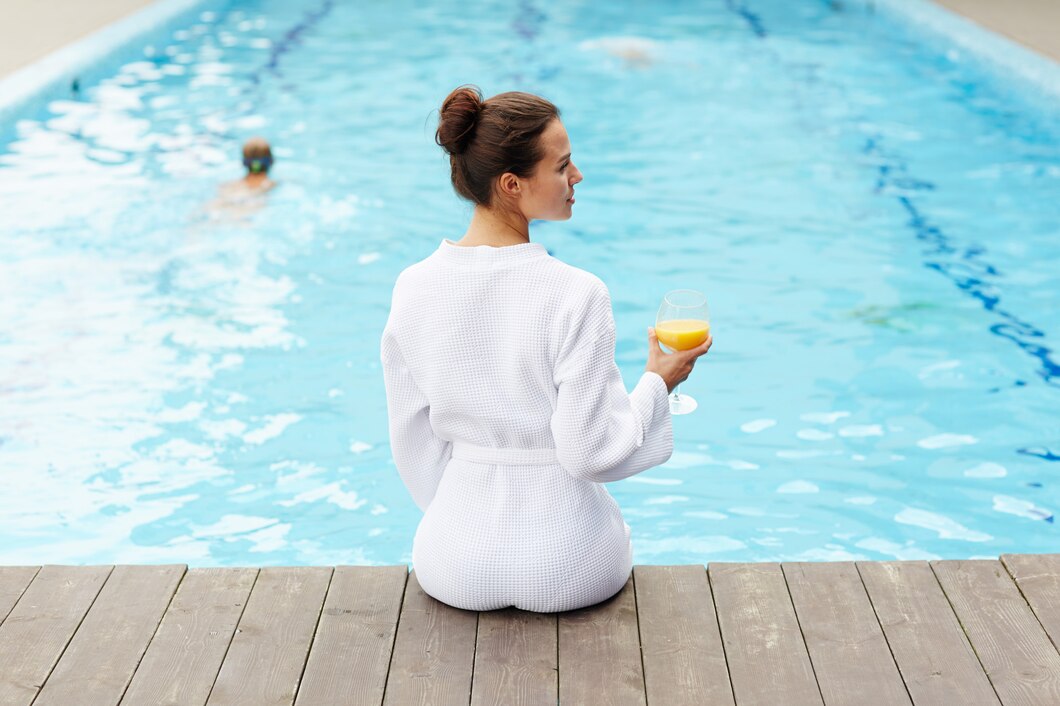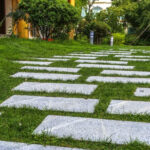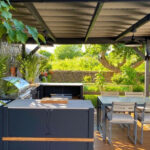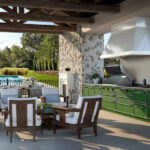Owning a pool or spa is a fantastic way to enjoy your outdoor space, but maintaining it year-round can be a challenge. Proper maintenance is essential to ensure your water stays crystal clear, your equipment runs smoothly, and you’re able to enjoy your pool or spa without worry. While maintenance needs may vary slightly depending on the season, the key is staying consistent with cleaning, water balance, and equipment checks. In this blog post, we’ll break down how to maintain your pool and spa year-round for the best possible water quality and performance.
1. Regularly Check Water Chemistry
One of the most important aspects of pool and spa maintenance is keeping the water chemistry in balance. Proper chemical levels ensure the water is safe, clean, and comfortable. Poor water chemistry can lead to cloudy water, skin irritation, algae growth, and scaling on your pool or spa surfaces.
Key steps to maintain water chemistry:
- Test water weekly: Use a pool and spa water testing kit to check the levels of pH, chlorine, alkalinity, calcium hardness, and stabilizer. This should be done weekly, or more frequently if you use the pool or spa often.
- Adjust pH and alkalinity: The ideal pH range for pools and spas is between 7.2 and 7.8. For alkalinity, aim for a range of 80-120 ppm (parts per million) for pools and 100-150 ppm for spas.
- Chlorine levels: Chlorine helps disinfect the water and kill bacteria. The recommended chlorine level is 1-3 ppm for pools and 3-5 ppm for spas.
- Calcium hardness: Calcium levels should be between 200-400 ppm for pools and 150-250 ppm for spas to prevent scaling and protect surfaces.
- Add chemicals as needed: If any levels are out of range, adjust them with the appropriate chemicals, such as pH increasers, alkalinity boosters, or chlorine tablets.
2. Skim and Clean Your Pool or Spa Regularly
Whether it’s leaves, debris, or dust, your pool or spa is bound to collect particles over time. Regular cleaning helps prevent debris from sinking to the bottom and causing discoloration or damage.
Key cleaning tasks:
- Skim the surface daily: Use a skimmer net to remove leaves, bugs, and other debris from the surface of the water.
- Vacuum regularly: Use a pool vacuum (manual, automatic, or robotic) to remove dirt and debris from the bottom of your pool or spa. For spas, you may need a smaller handheld vacuum designed for spas.
- Clean the spa jets: For spas, make sure the jets remain clean and free of buildup by wiping them down and occasionally running a spa cleaner through the system.
- Clean filters: Clean or replace your pool and spa filters every few weeks or as needed to ensure proper filtration and water circulation. A clogged filter can result in cloudy water and inefficient circulation.
3. Monitor and Maintain Equipment
Your pool and spa equipment, such as the pump, heater, filter, and circulation system, require ongoing attention to ensure they work efficiently. Proper maintenance helps avoid costly repairs and keeps everything running smoothly.
Key equipment maintenance tasks:
- Check the pump and filter: The pump and filter are essential to water circulation and filtration. Inspect them regularly to make sure they’re running properly. If the pump makes strange noises or the water flow seems weak, you may need to clean or replace the parts.
- Clean the filter: If you have a cartridge filter, rinse it every month or replace it annually. For sand filters, backwash the filter to clean it, and check the pressure gauge to ensure proper operation.
- Inspect the heater: For spas and pools with heaters, check that it’s functioning properly and clean any debris from around the heater. For gas heaters, ensure that the burner assembly is clean and that the gas supply is uninterrupted.
- Check water flow: Ensure that water is flowing freely through the system. If you notice low water pressure or any signs of blockage, clean the pump basket, check the skimmer, and inspect the pipes for any clogs.
- Check for leaks: Inspect the pool and spa for any leaks in the plumbing, pump, or heater. Leaks can lead to water loss, increased energy costs, and potential damage to the equipment.
4. Ensure Proper Water Circulation
Good water circulation is key to maintaining clean and clear water. Proper circulation helps distribute chemicals evenly, prevents stagnation, and aids in effective filtration.
Key tips for maintaining water circulation:
- Run the pump regularly: To maintain water flow and circulation, run your pump for 8-12 hours a day. During peak usage or hot weather, you may need to run it longer.
- Keep the water moving: Ensure your pool or spa’s return jets and skimmers are working properly to move water around the space. This will help distribute heat and chemicals evenly.
- Use a pool cover: Using a pool cover during the off-season or when the pool is not in use can help keep the water clean and reduce the amount of debris that enters the water.
5. Seasonal Maintenance Tips
Maintaining a pool or spa during different seasons requires some adjustments. In colder months, you may need to take additional steps to protect your pool or spa from freezing temperatures, while in warmer months, more frequent cleaning may be required.
Winterizing your pool or spa:
- Close the pool properly: If you live in a region with colder winters, you’ll need to winterize your pool. This involves balancing the water chemistry, cleaning the pool thoroughly, lowering the water level, covering the pool, and shutting down the pump and filtration system. You may also need to add winterizing chemicals to prevent algae and bacteria growth.
- Cover the spa: If you’re not using your spa during the winter months, keep it covered to protect it from debris and minimize energy loss.
- Keep the water circulating: If you live in a freezing climate, running the spa heater or keeping the pool pump running can prevent freezing of the pipes. A small amount of movement in the water will help keep it from freezing.
Spring/Summer pool or spa maintenance:
- Prepare for heavy usage: During warmer months, your pool and spa will likely be used more frequently, requiring more cleaning, testing, and balancing of chemicals.
- Maintain chlorine levels: The sun can break down chlorine quickly, so you may need to adjust the chlorine levels more frequently in the summer.
6. Check for Algae Growth and Control It
Algae is a common issue in pools and spas, especially during warmer months. If left unchecked, it can lead to cloudy water, foul odors, and slippery surfaces.
How to prevent and treat algae:
- Regularly test and adjust chlorine levels: Algae thrives in unbalanced water, so it’s important to keep chlorine and other chemicals in the recommended range.
- Use algaecide: If you notice algae growth, use an algaecide to treat it. Follow the instructions carefully and give the product time to work before resuming normal use of the pool or spa.
- Brush the surfaces: Scrub the walls, floor, and steps of your pool or spa regularly to prevent algae buildup. Pay special attention to corners and hidden spots where algae may grow unnoticed.
7. Cover Your Pool or Spa When Not in Use
A pool or spa cover can be your best friend when it comes to maintaining clean water. A cover keeps out debris, reduces the need for frequent cleaning, and helps maintain the water temperature. It also helps prevent evaporation and saves on water and chemical costs.
How to use a cover effectively:
- Use a pool cover: Invest in a good-quality pool cover that fits your pool and protects it from debris, dirt, and insects. For spas, a well-fitting cover keeps heat in and helps keep your water clean.
- Check the cover regularly: Ensure that your cover is in good condition and doesn’t have any holes or damage. A damaged cover won’t offer proper protection and may need to be replaced.
Conclusion
Maintaining your pool and spa year-round doesn’t have to be difficult, but it does require regular attention to ensure crystal-clear water and efficient equipment. By testing your water chemistry, cleaning regularly, maintaining your equipment, ensuring proper circulation, and adjusting for seasonal changes, you can enjoy a pristine pool or spa throughout the year. Staying on top of maintenance helps save time, money, and effort in the long run, and ensures that your pool or spa remains a relaxing, enjoyable place to unwind with family and friends.






